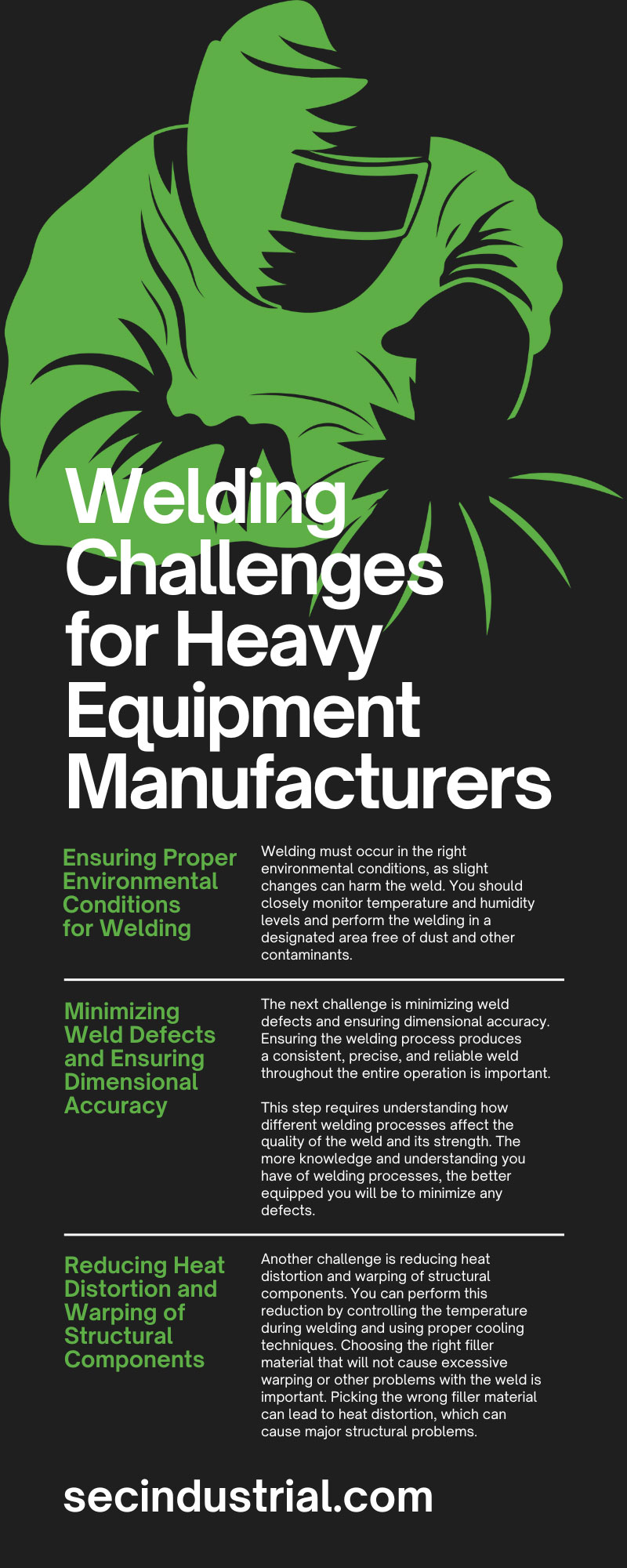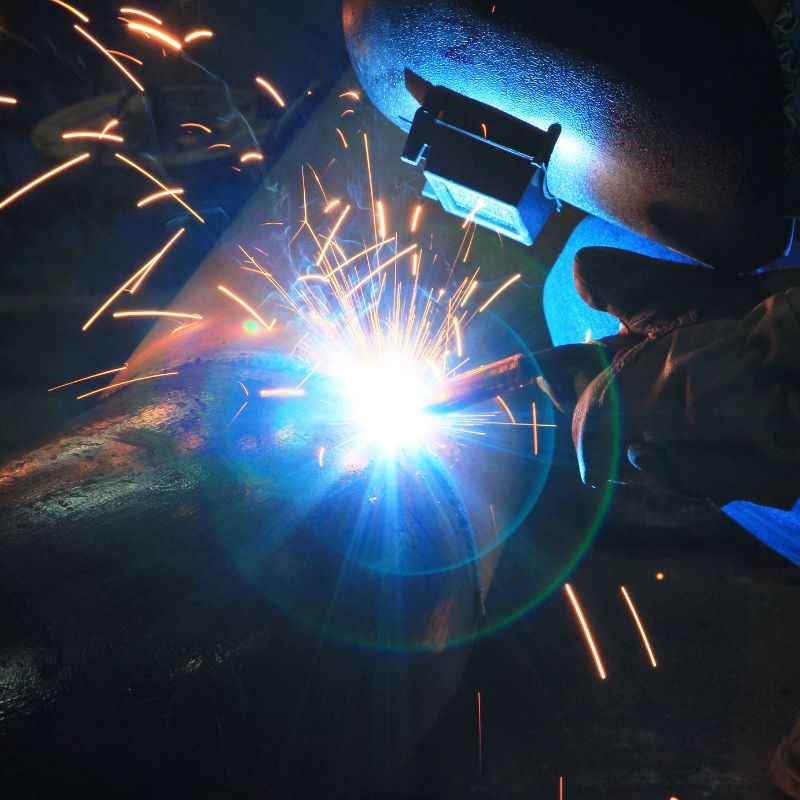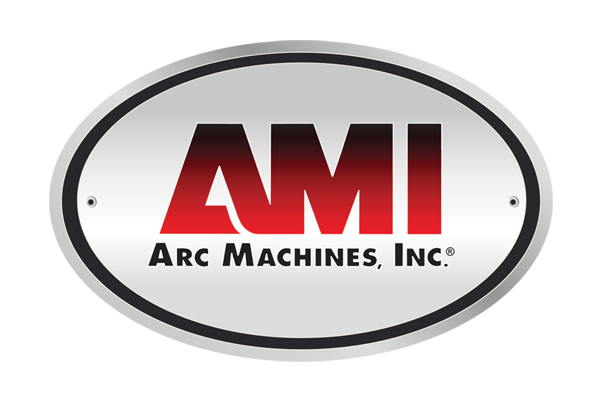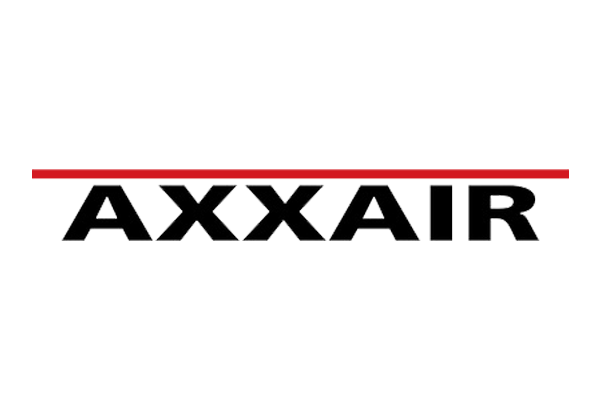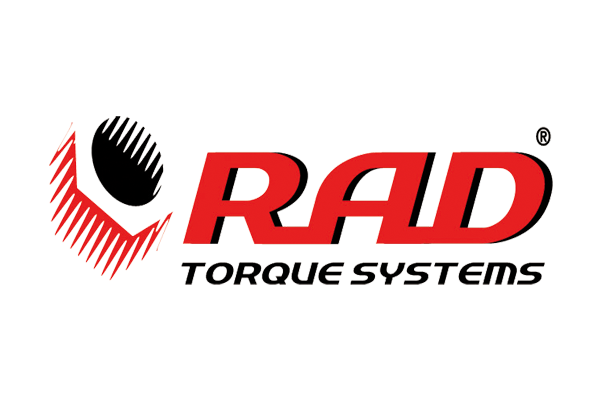7 Welding Challenges for Heavy Equipment Manufacturers
Are you an engineer in the heavy equipment manufacturing industry? If so, you likely understand the importance of properly welding steel components. Welding is at the core of many different fabrication processes, and if done improperly, it can cause significant issues for any project.
Let’s look at seven welding challenges for heavy equipment manufacturers that engineers like you are likely to face. Once you understand these welding obstacles, you have the proper knowledge to help ensure you create a safe and effective product.
Choosing the Right Welding Technique for Heavy Equipment
The first challenge is choosing the right welding technique for heavy equipment. Different types of welds require different tools and techniques to do properly, which can be difficult to coordinate. Do you use MIG or TIG welding? Also, what type of material you are working with, and what are the size and shape of the components?
When you have to decide which welding technique is best suited for the task, consider all these factors. You want your welds to be strong and reliable, so don’t take this preparation process lightly.
Selecting the Best Filler Materials for Welding Heavy Metals
Another challenge is selecting the best filler materials for welding heavy metals. Different types of metal require different filler types, which can be a difficult decision to make. Researching industry standards can help you determine which type of filler material will work best for your project.
Here are some things to keep in mind when selecting a suitable filler material:
- Consider the type of metal you work with and what it will require to make a strong weld.
- Research industry standards for welding metals to know which filler material is best suited for the job.
- Ensure you buy high-quality materials so your welds are strong and reliable.
Ensuring Proper Environmental Conditions for Welding
Welding must occur in the right environmental conditions, as slight changes can harm the weld. You should closely monitor temperature and humidity levels and perform the welding in a designated area free of dust and other contaminants.
For example, if you are welding outdoors, knowing wind speeds and gusts is important. This is because wind can cause contaminants to blow onto the weld and affect its integrity. Ultimately, paying close attention to the environment can help ensure your welds turn out well.
Minimizing Weld Defects and Ensuring Dimensional Accuracy
The next challenge is minimizing weld defects and ensuring dimensional accuracy. Ensuring the welding process produces a consistent, precise, and reliable weld throughout the entire operation is important.
This step requires understanding how different welding processes affect the quality of the weld and its strength. The more knowledge and understanding you have of welding processes, the better equipped you will be to minimize any defects.
Reducing Heat Distortion and Warping of Structural Components
Another challenge is reducing heat distortion and warping of structural components. You can perform this reduction by controlling the temperature during welding and using proper cooling techniques. Choosing the right filler material that will not cause excessive warping or other problems with the weld is important. Picking the wrong filler material can lead to heat distortion, which can cause major structural problems.
Optimizing Pre-Weld Preparation of Parts and Components
Optimizing the pre-weld preparation of parts and components is another challenge that engineers may face. Proper cleaning and surface preparation are essential for a successful weld, as any dirt or debris on the metal can cause problems down the line. Also, ensuring all pieces fit together correctly before welding begins is essential. You can use various tools and techniques to properly align the pieces before welding.
Ensuring Overall Quality and Efficiency of the Welding Process
Finally, engineers must ensure the overall quality and efficiency of the welding process. This quality control includes controlling heat input, using appropriate filler materials, monitoring weld penetration, and using the correct type of welding machine for each job. By doing all these things correctly, engineers can greatly improve the safety and longevity of their products. This longevity can also help save time and money, as welding will not have to be repeated due to subpar welds.
Things To Keep in Mind When Welding
Now that you know common welding challenges for heavy metal manufacturers, you know how to address the challenges and produce quality products. However, below are some additional important things to remember.
Adapting to Technological Advancements
Engineers must stay up to date with the latest advancements in welding techniques and equipment as technology continues to evolve. This involves becoming familiar with innovations like robotic welding systems and laser welding technologies, which can enhance the quality and efficiency of welding operations.
Importance of Safety Standards
Safety is paramount in welding operations. Engineers must adhere to stringent safety standards to prevent accidents and ensure the well-being of workers. This means using appropriate protective equipment, engaging in proper training, and performing regular safety audits. When it comes to welding, safety should always be a top priority.
The Role of Quality Control
Quality control plays a vital role in welding, enabling the detection and rectification of flaws in welds before they become critical issues. Implementing an effective quality control system involves regular inspections, nondestructive testing methods, and consistent documentation. Try to inspect and test every weld according to industry standards.
Sustainability Considerations
Sustainability is increasingly becoming a key factor in welding operations. Engineers should develop practices that minimize energy usage, reduce waste, and limit harmful emissions. Incorporating sustainable practices benefits the environment and enhances the reputation and longevity of the company.
By being aware of the different welding challenges that engineers in the heavy equipment manufacturing industry face, you can ensure your projects succeed. Your products will meet all safety standards and last for years with the proper attention to detail and knowledge of welding techniques.
If you need an automatic pipe spool welding machine or other welding equipment to help you with your project, SEC Industrial offers an extensive selection of high-quality welding machines and supplies. Contact us today to learn how we can help you maximize welding efficiency and ensure the highest quality.
